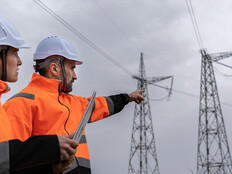What Are Vehicle Control Systems, and How Do They Work?
Vehicle control systems are designed to help organizations better manage fleet operations by providing both data about vehicle behavior and the ability to intervene if necessary to reduce risk.
“Technology is vastly changing many industries, and fleet and freight vehicle management is no stranger to that,” says Ramsés Gallego, international CTO at CyberRes and ISACA Ambassador for Barcelona. “Consider experiments with self-driving trucks with a predefined route that can go on their own, 24/7. Let’s say that we want a truck from the city harbor to go to the city center with heavy cargo. An algorithm can take into consideration many variables, such as road sensors, cameras and LIDAR, to help the truck safely make the trip.”
DISCOVER: The role of cloud computing and IoT for smarter transportation.
In New York City, the Department of Citywide Administrative Services is piloting the use of intelligent speed assistance for city fleet vehicles. By combining city map data and GPS tracking information from fleet vehicles, ISA technology limits the speed of vehicles to match posted limits, reducing the risk of a collision.
Researchers in Nashville, Tenn., recently conducted a broad study using vehicles equipped with artificial intelligence to combat so-called phantom traffic jams. These slowdowns occur during periods of high-volume traffic when one driver taps the brakes for no apparent reason, causing a ripple effect that can significantly reduce traffic speed or cause total gridlock. Using 100 cars equipped with AI cruise control systems, the researchers were able to smooth traffic flows by eliminating sudden slowdowns or accelerations that happen when human drivers are in control.
“Emerging technologies such as machine learning can improve routes and bring effectiveness and efficiency to the game in a way that’s second to none,” says Gallego. “Unsupervised machine learning can enhance both the control and monitoring of vehicles to provide increased predictability to the industry.”
How Do Government Fleet Teams Use Telematic Data?
To achieve improved operations and reduce the risk of accidents, fleet managers need what’s known as telematic data.
From the Greek prefix tele- (meaning “far off”) and the word informatics, which refers to information processing, telematics is the practice of capturing and processing information over large distances — in this case, vehicle data.
Vehicle telematic data often includes location data, driver behavior information, engine diagnostics and reports about overall vehicle activity. By combining and analyzing vehicle telematics, city and state fleet managers can get a sense of where vehicles are, what they’re doing and how driver behavior is helping (or hindering) safe operations on the road.
REVIEW: How Houston is addressing its population surge with public transit.
Consider a fleet driver heading into heavy traffic. While human nature suggests that the most efficient way to navigate busy streets is to immediately close gaps in distance as they open and brake whenever cars in front slow down, the Nashville study found this can cause — rather than cancel — stop-and-go traffic. By implementing AI tools that collect and leverage telematic data, it’s possible to streamline vehicle operations and improve overall efficiency.
Telematics can also help reduce the risk of vehicle and pedestrian accidents. This is one priority of New York City’s Connected Vehicle Project. By using advanced roadside equipment, traffic controllers and pedestrian detection systems, the city is looking to expand the scope of its telematic data and push automatic alerts to drivers that can help them avoid potential accidents.
How Can Agencies Use Data to Drive Fleet Efficiency?
The more data, the better, when it comes to improving fleet efficiency and increasing safety — with two caveats.
First, effective analysis across multiple vehicles is essential. No matter how detailed and accurate the data collected by vehicle telematic systems, it’s only useful with comprehensive analysis.
For example, map data might show consistent slowdowns at a specific intersection, and driver behavior might indicate stop-and-go vehicle operations. Taken at scale, however, collective data sources may pinpoint a specific problem with traffic signals at that intersection, or a higher-than-normal rate of accidents due to blind spots or a lack of signage. Addressing these issues can help mitigate the problem at scale.
Second, it’s also critical for fleets to consider cybersecurity for in-vehicle data operations.
EXPLORE: How a strong identity management program can benefit from citizen journey mapping.
“Creating and maintaining data security is imperative,” says Gallego. “Approaches such as data minimization, data encryption, tokenization, data masking and data scrambling are now fundamental to avoid theft or other threats to vehicles.”
He notes that one of the key challenges in effective security is standardization; fleets need to ensure that vehicles are capable of sharing data not only with each other but also with other state or city data sources to provide a clear picture of fleet operations at scale.
“It’s also important to improve other security disciplines such as identity and access management,” he says. “This ensures that only the right drivers or administrators have access to the right vehicles at the right time.”
While the road ahead isn’t without potential pitfalls, connected vehicle solutions offer a way to improve efficiency, enhance safety and reduce total risks. Gallego puts it simply: “With the right mindset and the right technologies, the possibilities are endless.”











